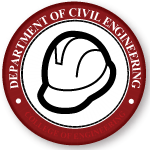Document Type
Conference Proceeding
Publication Date
5-2002
Abstract
Conductive concrete is a cementitious admixture containing a certain volumetric ratio of electrically conductive materials to attain high and stable electrical conductivity. Due to its electrical resistance, a thin overlay of conductive concrete can generate enough heat to prevent ice formation when energized by AC power. Under a research sponsored by Nebraska Department of Roads, Yehia and Tuan developed a mix specifically for concrete bridge deck deicing while meeting the ASTM and AASHTO strength specifications for overlay construction. An average thermal power of 591 W/m2 (55 W/ft2) with a heating rate of 0.56oC/min (1oF/min) was generated by a 1.2 m by 3.6 m (4 ft by 12 ft) and 8.9 cm (3.5 in.) thick conductive concrete test slab in snow storms. The average energy cost was about $0.8/m2 ($0.074/ft2) per snow storm. This technology is readily available for airfield pavement deicing application.
The Phase I findings of this research have shown that conductive concrete overlay has the potential to become the most cost-effective concrete pavement deicing method. A Phase II project is underway, in which a 45.7 m (150 ft) long and 11 m (36 ft) wide bridge deck at Roca, Nebraska, will have conductive concrete overlay implemented. The construction is scheduled for summer 2002.
In this paper, evaluations of conductive concrete mixes with steel shaving, carbon and graphite products, in addition to steel fibers, are discussed in detail. Also, the implementation of two conductive concrete sidewalks in Shelby, Ohio is presented.
Recommended Citation
Yehia, Sherif A. and Tuan, Christopher Y., "Airfield Pavement Deicing with Conductive Concrete Overlay" (2002). Civil Engineering Faculty Proceedings & Presentations. 2.
https://digitalcommons.unomaha.edu/civilengfacproc/2


Comments
Tuan, C.Y., and Yehia, S.A., “Airfield Pavement Deicing with Conductive Concrete Overlay,” 2002 Federal Aviation Administration Technology Transfer Conference, Atlantic City, NJ, May 5-7, 2002.